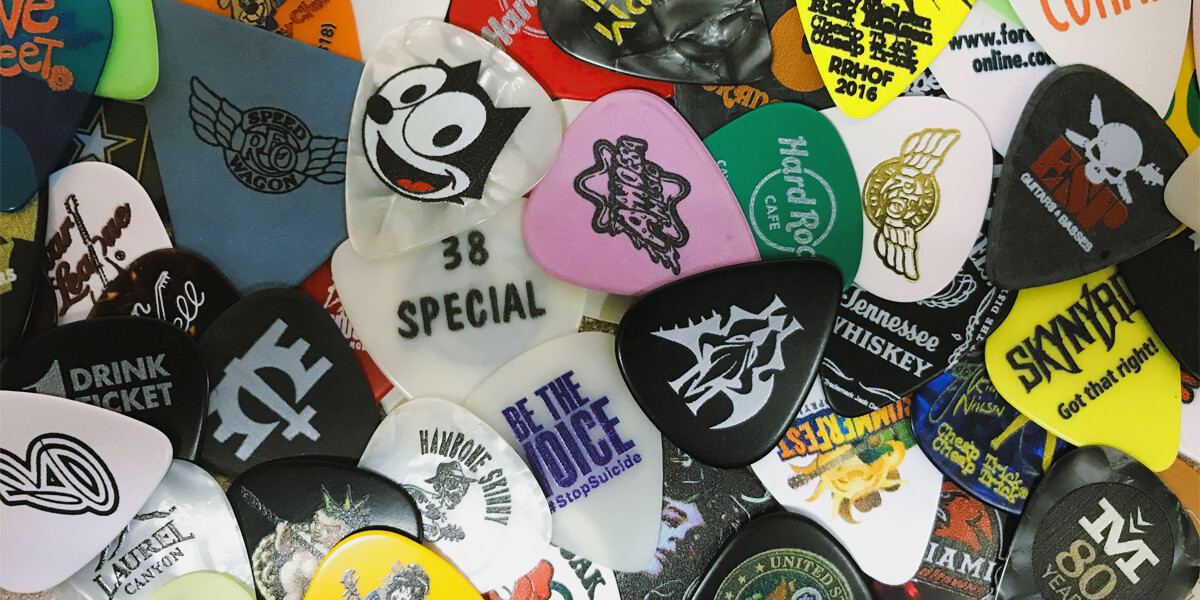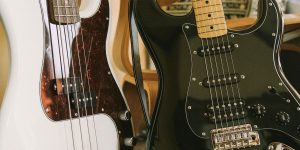As a passionate guitarist, I’ve come to realize that even the tiniest details can make a world of difference when it comes to creating beautiful melodies. Today, I want to shed some light on a subject that might seem easy but holds immense significance: guitar pick dimensions. Yes, those little plectrums we hold between our fingers have unique sizes and shapes, each with its own distinct impact on our playing style.
Join me as we explore the realm of pick sizes and unravel the secrets they hold, unlocking new possibilities for our musical journeys.
Understanding guitar pick dimensions
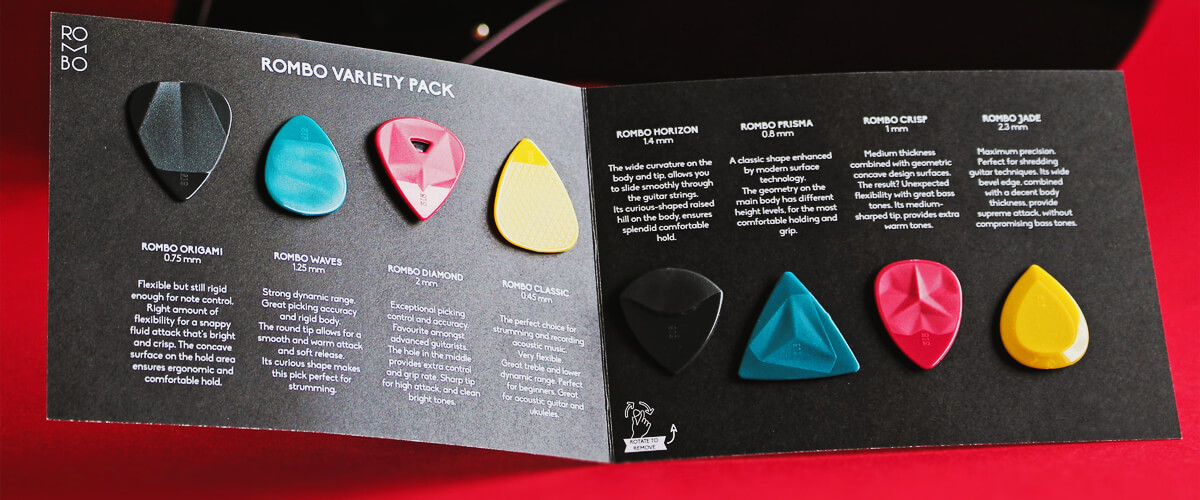
Pick size
When we talk about the dimensions of a guitar pick, we’re referring to its width and length. Picks come in a range of sizes, from small to large. The size of a pick plays an important role in your playing experience, affecting your grip, maneuverability, and control.
Let’s start with small picks. They provide precision and accuracy, allowing you to navigate those complex riffs effortlessly. Conversely, larger picks offer a more substantial surface area, providing a firm grip and better control for strumming chords or playing with a heavier attack.
Here’s where it gets interesting: your hand size and playing style influence your guitar pick sizes. A smaller pick might feel more comfortable and allow for nimble movements if you have smaller hands. And if you have larger hands, a larger pick can give you a better grip and prevent it from slipping between your fingers.
Pick thickness
Guitar pick thickness is often called gauge, indicating the material’s thickness. Picks come in many options, from thin as a whisper to thick as a fortress wall.
Thin picks, like a feather dancing on the strings, offer a gentle attack and allow for enhanced flexibility. They produce a brighter tone, ideal for strumming chords or playing delicate melodies. On the other hand, thicker picks provide a more solid attack, less flexibility, and a warmer, rounder tone.
If you’re into fast-paced shredding or heavy metal, a thicker pick will provide the strength and durability needed for aggressive playing. For those who prefer intricate fingerstyle playing or acoustic strumming, a thinner pick thickness for acoustic guitar offers the finesse and sensitivity required.
Pick shape
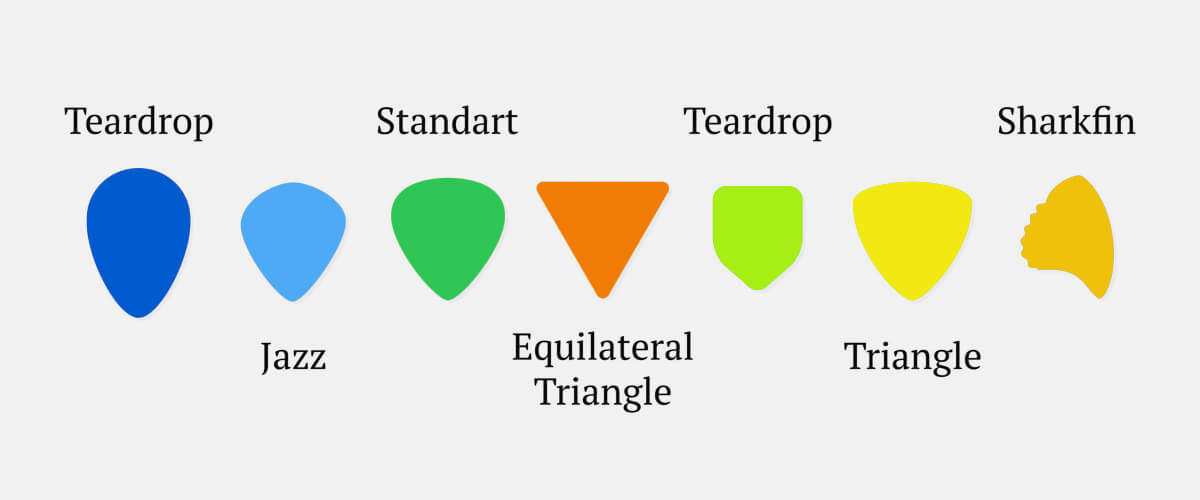
Did you know that the guitar pick shapes can profoundly impact your playing technique, string interaction, and overall playing comfort? From the classic standard pick to the funky teardrop, jazzy, and even triangular shapes, the possibilities are endless. Let’s explore these types of guitar picks and how their shapes can enhance your musical journey.
| Pick Shape | Description | Playing Technique | String Interaction | Playing Comfort |
|---|---|---|---|---|
| Standard | The classic pick shape we all know and love. | Versatile and suitable for various playing styles. | Provides a balanced attack on the strings. | Comfortable grip for most players. |
| Teardrop | Offers a tapered point for precise control and smooth strumming. | Ideal for acoustic and rhythm playing. | Smooth glide across the strings for a warm tone. | Ergonomic design for prolonged playing sessions. |
| Jazzy | A smaller, rounded shape for quick, agile playing. | Perfect for jazz and fast-paced genres. | Allows for nimble string skipping and intricate picking. | Compact size provides ease of use and dexterity. |
| Triangular | Provides three distinct points for versatility in picking angles. | Well-suited for heavy rock and metal. | Enhanced string articulation and power. | Offers a firm grip and stability during intense playing. |
Pick usage with specific instruments
Whether you’re strumming an acoustic guitar, shredding on an electric guitar, grooving on a bass guitar, or plucking away on a ukulele, the difference in guitar picks can change a lot! Here are some key considerations to keep in mind when choosing picks for different instruments:
- Acoustic guitar: For acoustic players, a medium to heavy pick is often preferred to achieve a fuller and more pronounced sound. Since acoustic guitars typically have thicker strings, a sturdier pick helps you strike the strings with enough force and control.
- Electric guitar: When it comes to electric guitars, the choices are endless. Thin or medium picks are commonly used to facilitate fast picking and provide a brighter tone. However, if you’re after a thicker, chunkier sound, try experimenting with heavier picks.
- Bass guitar: Bass players often opt for larger and thicker picks to produce a deeper, punchier sound. The added surface area of the pick helps with better string contact, resulting in enhanced articulation and low-end definition.
- Ukulele: When strumming or fingerpicking on a ukulele, a lighter and thinner pick is generally favored. Due to the instrument’s smaller size and nylon strings, a lighter pick provides a gentler touch and allows for more delicate control over the strings.
The choice of the pick should also take into account your playing technique. If you’re a strummer, a rounded or triangular pick may provide a smooth and consistent attack. And if you’re into intricate picking or hybrid picking, a pointier pick can offer more precision and accuracy.
Pick material
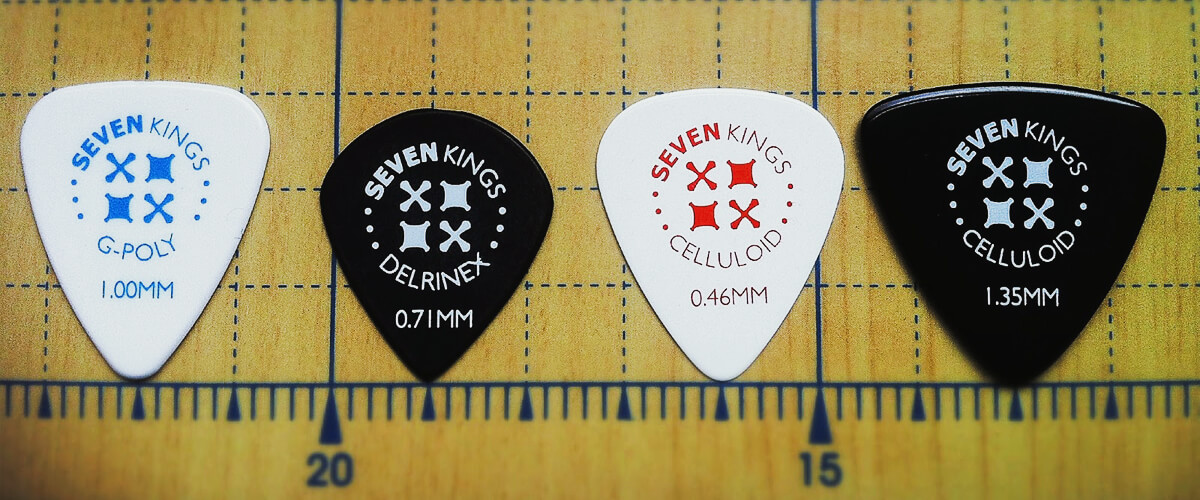
You might be surprised to learn that the material of your pick can significantly impact your tone, attack, and durability. Let’s break it down point by point:
- Celluloid: This popular pick material offers a warm and rounded tone, making it great for strumming and rhythm playing. However, celluloid picks can be prone to wear and tear over time.
- Nylon: Nylon picks are known for their versatility and affordability. They offer a balanced tone with a slightly brighter edge, making them suitable for various playing styles.
- Delrin: If you’re looking for a pick that offers a crisp attack and enhanced control, delrin might be your best bet. Delrin picks provide a bright and articulate tone, ideal for intricate picking and fast-paced solos.
- Metal: Metal picks are all about power and aggression. They produce a sharp and metallic tone, perfect for heavy riffs and shredding solos. But they can be unforgiving on your strings and might require some adjustment in your playing technique.
- Stone: For those seeking a unique and distinctive sound, stone picks are worth considering. They are known for their durability and can offer excellent grip, but such picks may feel different in your hand compared to more traditional picks.
Is there an ideal pick size for beginners?
While there isn’t a definitive “one-size-fits-all” answer, it’s generally recommended for beginners to start with a medium-sized pick. As you gain more experience and experiment with different genres, you can explore different guitar pick measurements to find what suits you best.
How do I know if a pick size is too small or too large for my hand?
Here’s a simple test: hold the pick between your thumb and index finger, leaving a small portion of the pick extending beyond your fingers. If the pick feels too small and you have trouble gripping it securely, it might be too small for your hand. On the other hand, if the pick feels cumbersome and difficult to maneuver, it could be too large.

